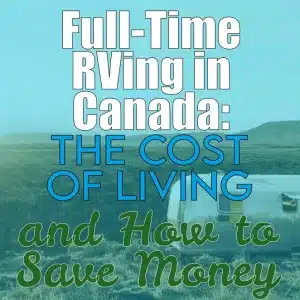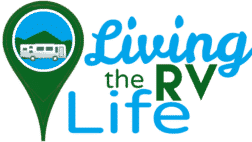 Full-time RVing can be an exciting and affordable way to travel, explore new places, and live a minimalist lifestyle. If you’re considering full-time RVing in Canada, it’s important to understand the cost of living and how to save money on the road.
Full-time RVing can be an exciting and affordable way to travel, explore new places, and live a minimalist lifestyle. If you’re considering full-time RVing in Canada, it’s important to understand the cost of living and how to save money on the road.
First, let’s talk about the cost of living. The cost of RV Living full time in Canada can vary depending on a few factors, such as the size of your RV, the amenities you need, and your travel style. However, here are some rough estimates of the expenses you can expect:
1. RV purchase/rental
If you don’t already own an RV, you’ll need to purchase or rent one. The cost can vary greatly depending on the type, size, and age of the RV. New RVs can cost anywhere from $50,000 to over $100,000, while used RVs can range from a few thousand dollars to tens of thousands of dollars. Renting an RV can also be an option, with prices ranging from $100 to $300 per day, depending on the type and size of the RV.
When choosing an RV to purchase or rent, consider the number of people who will be traveling with you, the amenities you need, and the type of terrain you will be exploring. A larger RV with more amenities may be more comfortable, but it will also be more expensive to operate and maintain. On the other hand, a smaller RV may be more affordable, but it may not have all the features you need for long-term travel.
2. Campground fees
Campgrounds in Canada typically charge between $25 to $50 per night for a basic site with water and electric hookups. However, fees can vary depending on the location, season, and amenities offered. If you want additional amenities like sewer hookups, cable TV, or Wi-Fi, expect to pay more.
To save money on campground fees, consider staying in national or provincial parks, where fees are typically lower than private campgrounds. You can also look for discount programs, such as memberships to camping clubs or loyalty programs offered by campground chains.
Many full time Rvers split their time between private campgrounds and other places to keep costs down. For example you can boondock for 5 of 7 days, and perhaps spend a couple days in an RV park where you can drain your holding tanks, fill up with fresh water, do laundry, and so on.
3. Fuel
The cost of fuel for your RV can vary depending on how often you move your RV and the distance you travel. As of April 2023, the average price of gas in Canada is around $1.75 per liter. To save money on fuel, consider planning your route carefully to minimize driving distance, hills, and “stop and go” traffic, & driving at a steady pace to improve fuel efficiency, and using apps to find the cheapest gas stations along your route.
4. Food and groceries
The cost of food and groceries can vary depending on your eating habits and the types of food you buy. If you plan on cooking most of your meals in your RV, you can save money compared to eating out at restaurants. To save money on groceries, consider buying in bulk and taking advantage of sales and discounts. You can also save money by cooking with seasonal and locally sourced ingredients.
Keep in mind, however, that your storage is limited. Many RV’s have small freezers (for example) so if you do plan on stocking up, consider purchasing an extra mini-fridge or mini-freezer as this will allow you to keep even more food.
5. Entertainment and activities
The cost of entertainment and activities can vary depending on your interests. You can save money by exploring free attractions like national parks or hiking trails. You can also take advantage of cultural events and festivals that are often free or low-cost.
To save money on entertainment, consider purchasing a National Parks Pass or a Provincial Parks Pass, which can provide discounts or free admission to parks and other attractions.
You can also look for discount programs for activities such as golfing, fishing, or skiing. Additionally, consider exploring your destination on foot or by bike, which can save you money on gas and transportation costs.
Now that you have an idea of the expenses, here are some tips for saving money while full-time RVing in Canada:
1. Boondocking
Boondocking, also known as dry camping, or off-grid camping, is a great way to save money on campground fees and experience more remote locations. When boondocking, you park your RV in a location without hookups, such as in a national forest, on public land, or in a parking lot. Some RVs are equipped with solar panels, generators, and water tanks that can sustain you for several days or even weeks without needing to hook up to electricity, water, or sewer services.
Before you go boondocking, research the local regulations, safety concerns, and weather conditions. You may need to obtain permits, pack extra supplies, and be prepared for unexpected situations. Boondocking can be a rewarding and adventurous way to RV, but it requires some preparation and planning.
2. Cook your meals
Eating out can quickly add up, especially if you’re traveling long-term. One of the advantages of RVing is that you always have a kitchen with you, so that you can cook your own meals in your RV, which can save you money and allow you to eat healthier. Most RVs come equipped with a kitchenette or a full kitchen, including a stove, oven, microwave, refrigerator, and sink. You can also use a portable grill or a campfire for outdoor cooking.
To save money on groceries and meal planning, consider making a list of your favorite recipes, stocking up on non-perishable items, and buying in bulk. You can also shop at discount stores, farmers markets, or local co-ops for fresh produce and organic products. Cooking your own meals can be a fun and creative way to explore local cuisine and save money on dining out.
3. Buy in bulk
Buying groceries in bulk can save you money in the long run, especially if you’re RVing full-time. Look for discount stores, warehouse clubs, or online retailers that offer bulk discounts on food, toiletries, and household items. You can also consider joining a local food co-op or CSA (Community Supported Agriculture) program, which provides fresh produce directly from local farms.
Many towns and cities in Canada also put on “farmer’s markets” or other outdoor markets where you can buy fresh fruit, produce, and other items.
You may also find local farms, orchards and fruit stands where you camp which can also help lower your overall food bill, while also providing you the freshest food available.
When buying in bulk, be mindful of storage space and expiration dates. You may need to invest in additional storage containers, shelves, or coolers to store your bulk items. You can also use a vacuum sealer or a canning kit to preserve your food for longer periods.
4. Use public transportation
If you’re staying in a city or a popular tourist destination, consider using public transportation instead of driving your RV around. Public transportation options can include buses, subways, light rail, or ferries, depending on the location. Using public transportation can save you money on fuel, parking fees, and vehicle maintenance, as well as reduce traffic congestion and air pollution.
To plan your public transportation route, use online tools such as Google Maps or transit apps that provide schedules, fares, and real-time updates. You can also consider purchasing a multi-day pass or a tourist card that offers discounts or free admission to attractions.
For example, when we spent a winter in Las Vegas (our first long term camping trip outside of Canada) we had the use of a free hotel shuttle to take us from our campground to The Strip or Downtown. If you have such an option, consider tipping the driver.
5. Workamping
Workamping is a popular way for RVers to earn extra income and save money on camping fees. Workamping involves working at a campground or RV park in exchange for free or discounted camping fees. Workamping jobs can include tasks such as office work, maintenance, landscaping, or hospitality services.
To find workamping opportunities, check online job boards, RVing forums, or campground websites. You can also network with other RVers or ask your campground hosts for recommendations. Workamping can be a great way to meet new people, learn new skills, and offset some of your travel costs.
Conclusion
Full-time RVing in Canada is an excellent way to explore the country’s diverse landscapes and cultures while living a minimalist and adventurous lifestyle. However, it’s essential to understand the costs associated with full-time RVing and implement some money-saving strategies to make the most of your experience.
By carefully choosing your RV, planning your route, and using cost-saving tips such as boondocking, cooking your meals, buying in bulk, using public transportation, and workamping, you can significantly reduce your expenses and enjoy more of what Canada has to offer. Additionally, consider joining RVing clubs or online communities to connect with other RVers, learn from their experiences, and get insider tips on the best places to visit and stay.
Full-time RVing in Canada is a unique and rewarding lifestyle that offers endless possibilities for adventure, discovery, and personal growth. With the right mindset, preparation, and resources, you can create a fulfilling and affordable RV lifestyle that allows you to see the beauty of Canada on your own terms.

